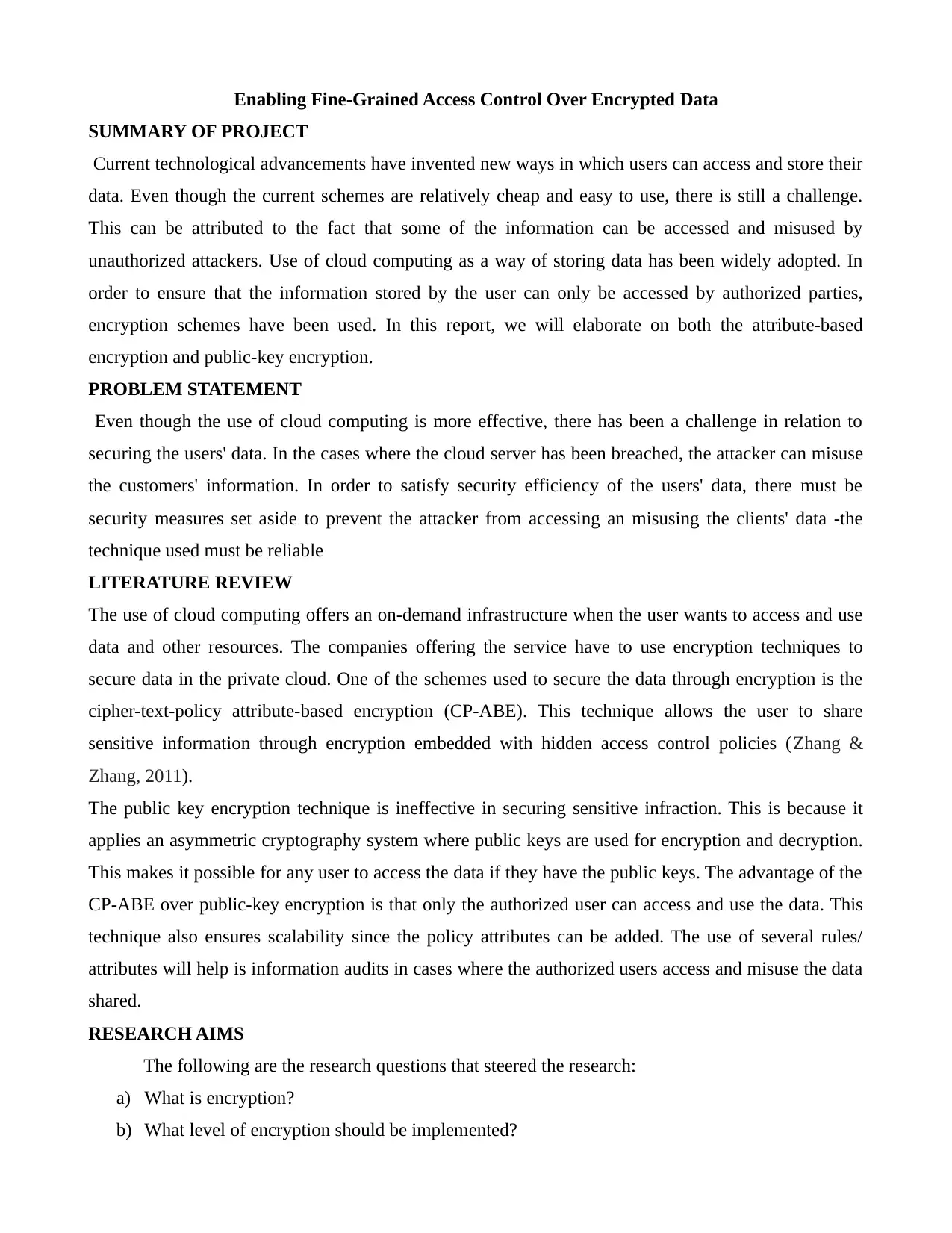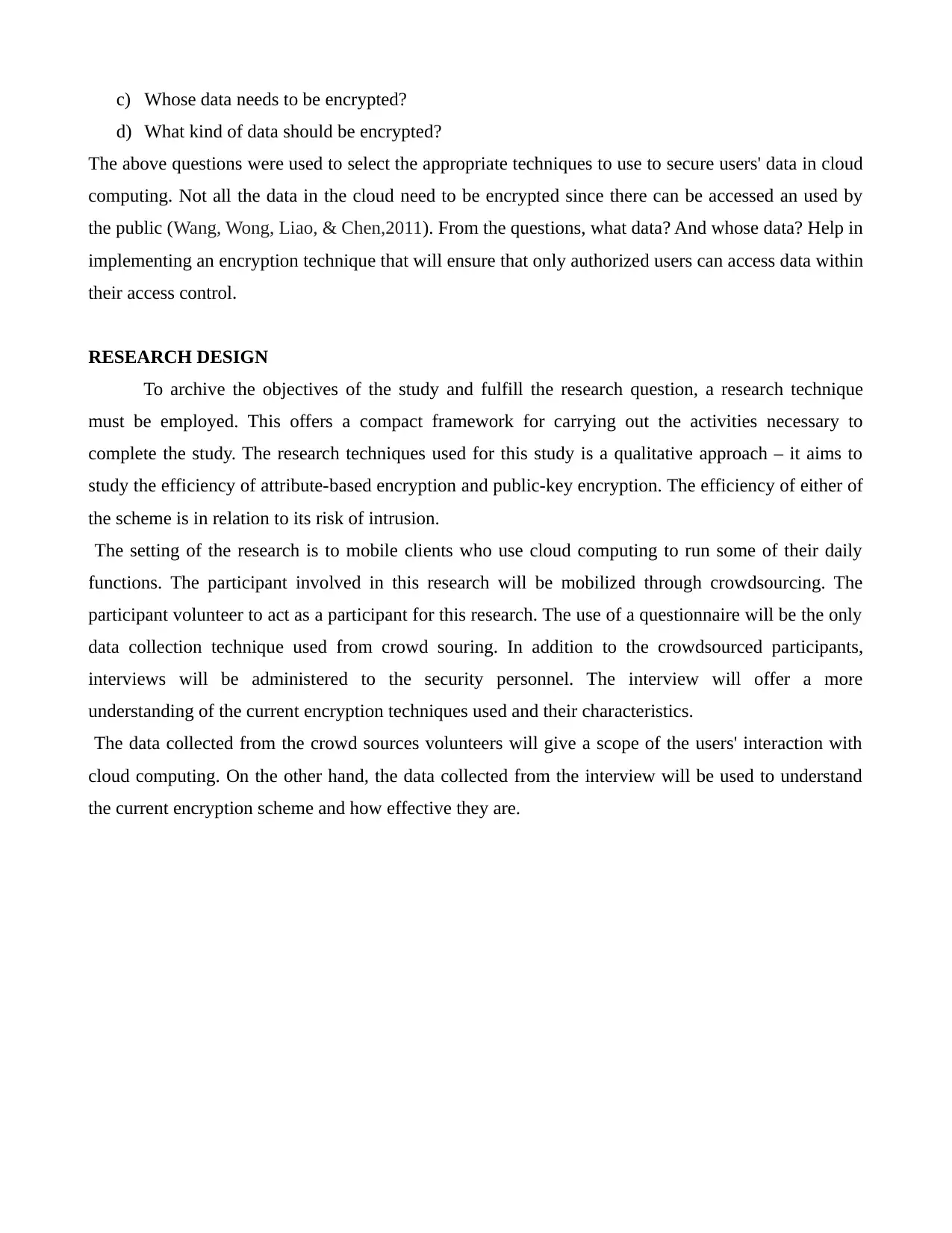Comparative Analysis: ABE vs PKE for Cloud Data Security, Project
VerifiedAdded on 2022/08/21
|3
|824
|16
Project
AI Summary
This project delves into the critical aspects of securing data in cloud environments, focusing on the comparative analysis of Attribute-Based Encryption (ABE) and Public Key Encryption (PKE). The project begins by outlining the challenges in securing data in cloud computing, where unauthorized access poses a significant risk. The literature review explores Ciphertext-Policy Attribute-Based Encryption (CP-ABE) and public-key encryption, highlighting their respective strengths and weaknesses. The research aims to understand the levels of encryption required, the types of data that need encryption, and the authorized users. The research design employs a qualitative approach, gathering data through questionnaires and interviews to analyze the efficiency of both encryption schemes. The project aims to provide a comprehensive overview of ABE schemes, compare them with PKE mechanisms, and analyze their differences, including their advantages and disadvantages. The project also explores the practical implementation of a concrete ABE scheme. The study uses crowdsourcing and interviews with security personnel to gain insights into user interactions with cloud computing and the effectiveness of current encryption schemes. The project offers valuable insights into data security and access control in cloud environments.
1 out of 3









![[object Object]](/_next/static/media/star-bottom.7253800d.svg)